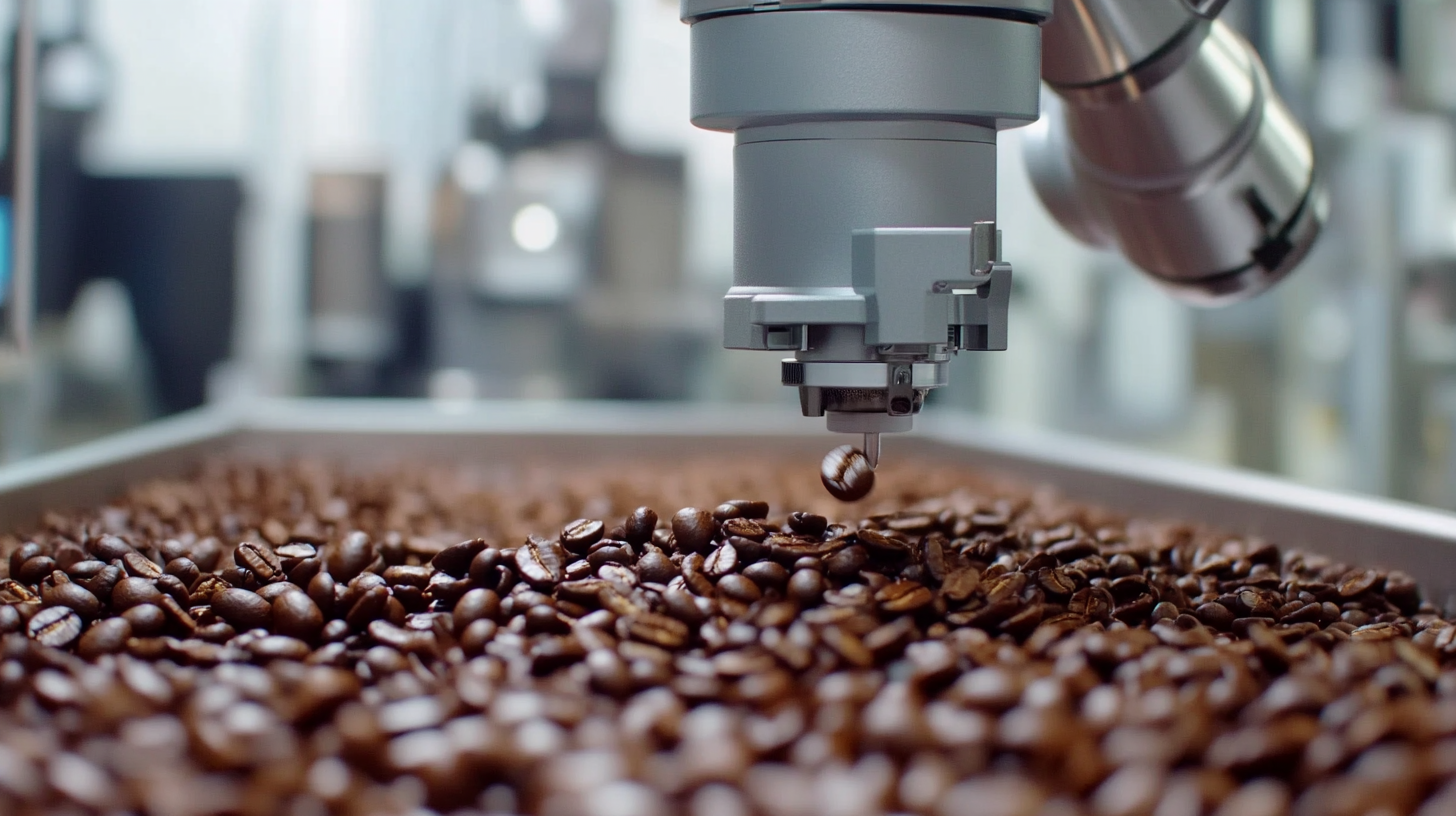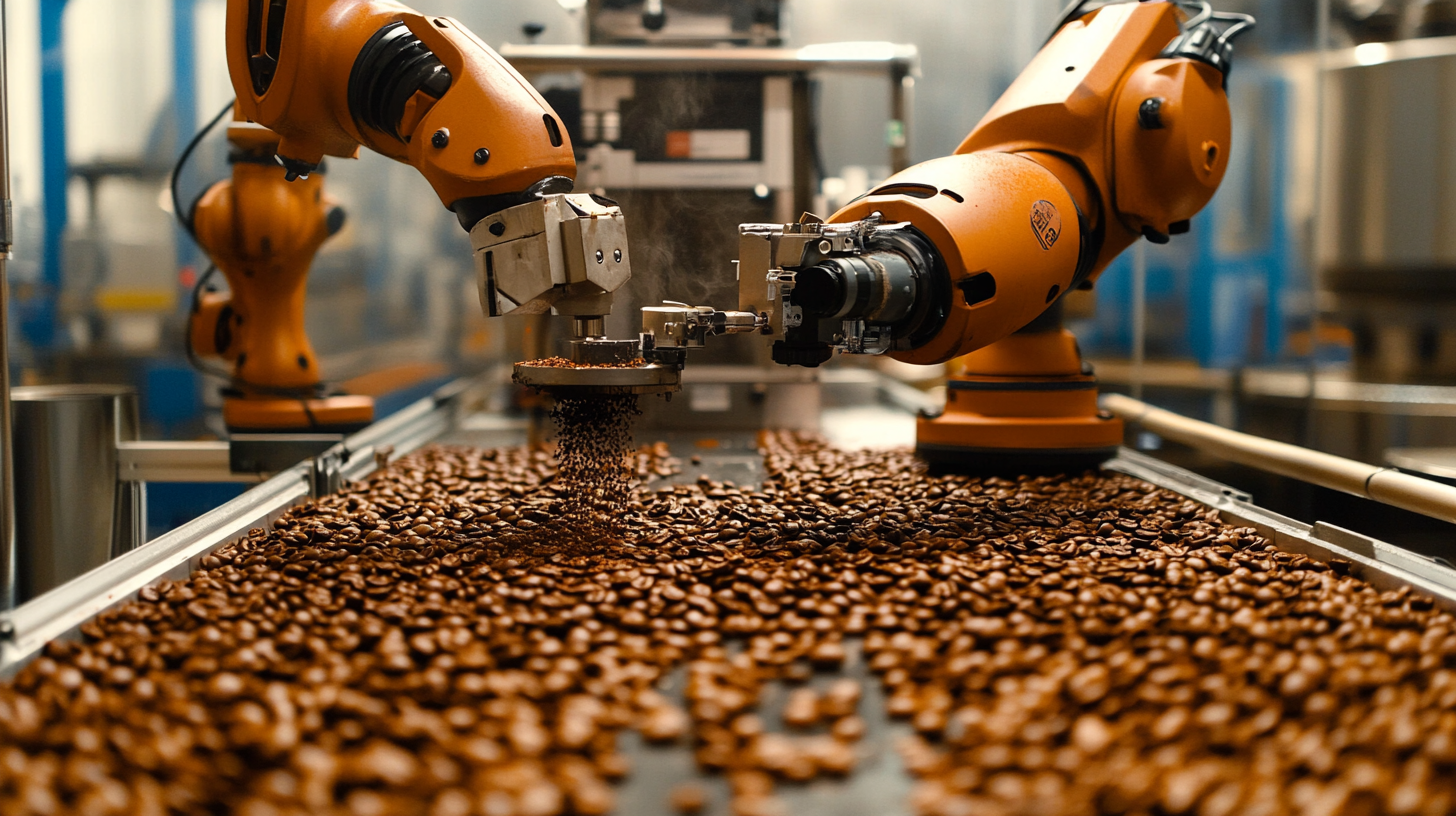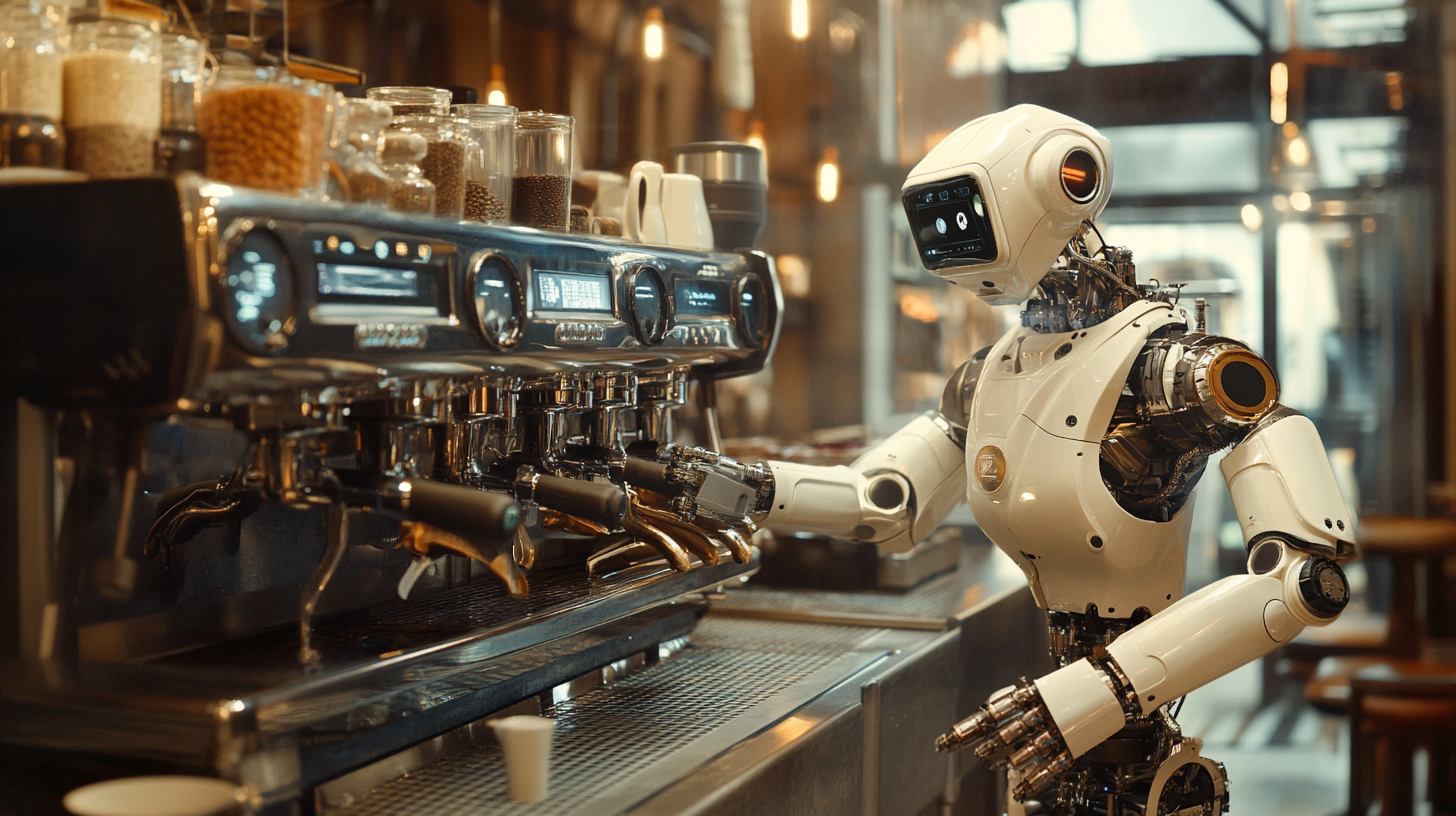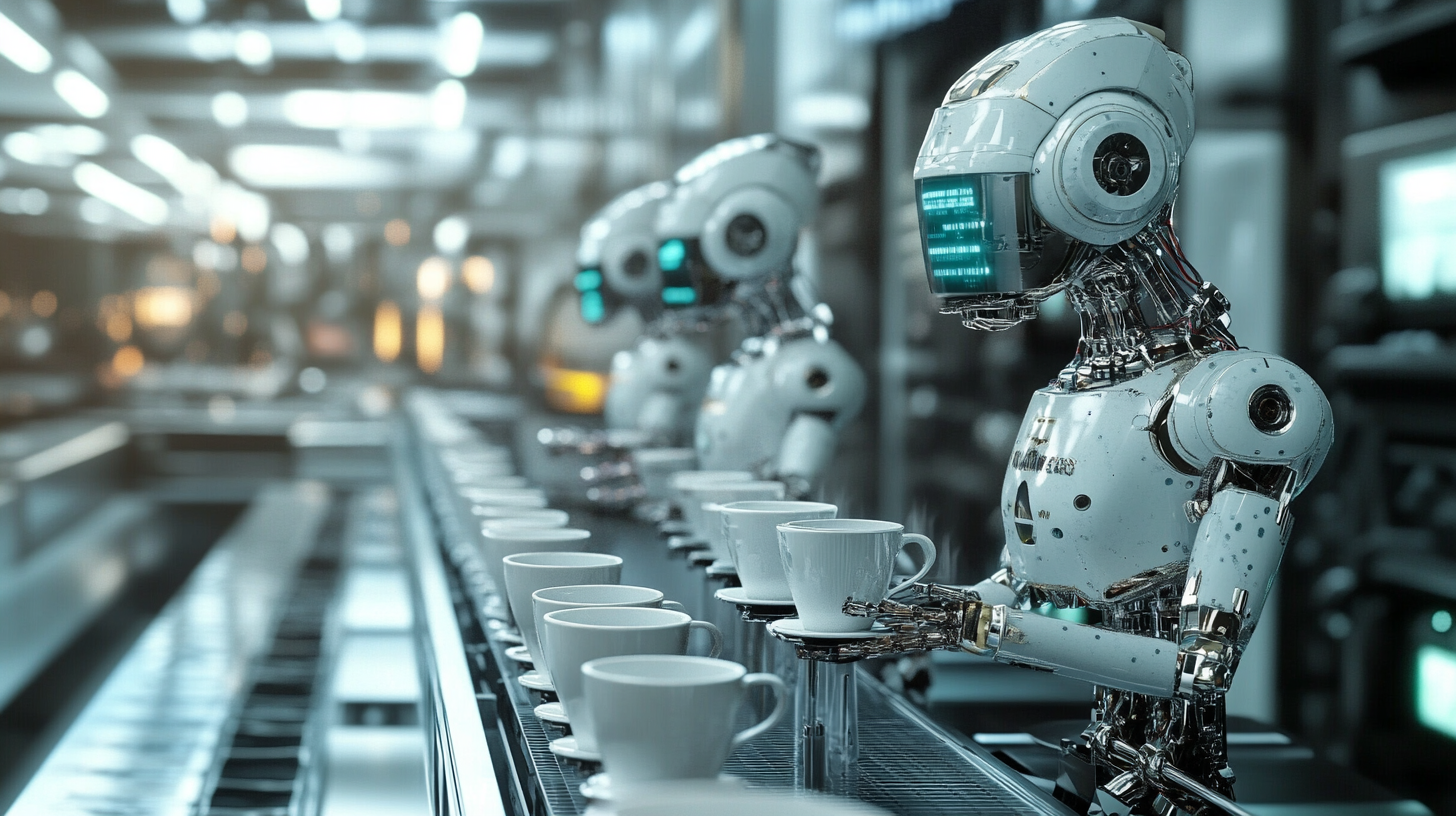Future Trends in Robot Espresso Production for Global Buyers in 2025
In consideration of the year 2025, the coffee industry is on the precipice of a technology revolution-in the area of reconversion from the way enjoyed the beverage by robot generation of espresso. Automation has not only promised the kind of consistency and efficiency in coffee preparation, but also a golden chance at global consumers to tap into their cutting-edge innovations for what future holds for changing tastes. Advanced robotics will guarantee that every cup of espresso will be made within stringent quality challenges-of course with new standards as per taste and quality.
In this blog, we shall observe approaching future trends in robots manufactured for espresso production. Enhanced brewing techniques coupled with artificial intelligence will lead us into highlighting some of these features and how they are likely to affect the world coffee scene and subsequently present opportunities for the buyers across the globe because they are traveling down this potentially life-changing road. So, let us also observe the impact of this robotic revolution, the difficult parts it holds, and remain informed and equipped to ensure that stakeholders can stay within the testing environment of the changing market.

Innovative Technologies Shaping Espresso Robotics in 2025
Significant advancements in espresso robotics driven by innovative technologies will be made in 2025. Increasing levels of automation into food and beverage production-Espresso machine industry embracing robotics into their models for efficiency and consistency. Recently a report estimates that the global coffee machine market is to grow by $12 billion by 2025 with a large percentage coming from robotic solutions. Smart technology integration allows the brewing parameters to be exact and real-time monitored and adjusted, according to consumer set standards at an unparalleled level. Emerging such innovations, including artificial intelligence and machine learning, portend significant developments concerning how espresso will be made and served in the future. Robotic espresso stakeholders, relying on AI algorithms, may base decision rules by learning from user perception to optimize brewing profiles. Then every cup meets consumer requirements based on high precisions attached to AI-based systems. It aligns with trends visible in renewable energy and smart technology: innovation stills the backbone of operational excellence. Companies defining the cutting edge in espresso robotics are likely to apply similar concepts as found in wind power and energy storage, where continuous improvement and quality assurance builds competitive advantage. Moreover, modular and flexible robotic systems will be further developed to ensure easier integration into current coffeehouses and plants. The new machines could therefore significantly boost production capabilities while improving them. As the future of espresso production in particular improves, keeping abreast of technological trends will help buyers find effective solutions that complement high-quality coffee production in the current changing market.

Sustainability Practices in Automated Coffee Production
As the year 2025 approaches with rapid footsteps, a great transformation awaits in the coffee industry. A piece concerning the transformation is afforded by the new production form through automation of espresso machines. The biggest challenge of today's coffee industry is sustainability. According to a report by the International Coffee Organization, approximately 60% of coffee makers govern their purchasing decisions based on sustainable sourcing, thus signaling a consumer shift towards ecological thinking. The final, but really exciting, avenue is for the environmental consciousness of the coffee production processes to be meshed with efficiency through automation, with special reference to robots.
The dummy robot-controlled devices can elevate control over the coffee-making ritual, reducing waste and the significant use of energy from it. Multiple studies from the Specialty Coffee Association have shown a decline in water consumption only, over 30% with automated brewing, all the while making ample reduction in the time of optimization for extraction and yielding utmost quality in every cup. The discerning consumers could take the future application of robots in the espresso process to imply originality under the guise of responsible sourcing.
As a matter of fact, automation within the coffee industry could very well mark the beginning of sustainable farming. As data analytics and machine learning find their way into the coffee farming landscape, robotic systems may study such a thing as precise monitoring of coffee crop data for farming in order to assist farmers in judiciously managing water and fertilizer applications. According to a report by McKinsey, this may effectively push coffee-farming yields to increase by as high as 20% while lessening their environmental burden. So indeed, modern-world green buyers are expected to wish for the resurrection of robotized espresso production system and modern-sustainable coffee beans, popularly, from this year itself.

Customization Trends in Robot-Made Espresso for Global Markets
With the ever-growing coffee market, customization trends in robot-made espresso will turn out to be a critical determinant for global markets by the year 2025. Reports show that by 2019, the size of the coffee market in China would be nearly 1000 billion yuan, and by 2021, the freshly ground coffee segment would be more than 1500 billion yuan. Huge prospects are growing for personalized coffee experiences, which bank perfectly on consumer preferences for customization.
Smart home technologies have now opened up prospects for new-age coffee. Convenience as well as precision in the brewing of the robot espresso is the goal sought more by the consumers. Coffee machines are almost fully automated now, with customization features allowing the user to set the brew strength and temperature, and might even adjust the coffee's taste profile. Personalization enhances satisfaction for users and is sure to tempt true coffee lovers who enjoy a fine cup in their home.
In addition to these trends, leading companies are working to deliver personalized coffee solutions. This burgeoning sector now has nearly 2000 companies trying to capitalize on consumer desire for customized experiences. Another trend pushing brands to change and innovate to stay alive in the jam-packed market is the current craze of high-tech and good-looking coffee machines. Moving towards the year 2025, when consumers can become more accustomed to customization in robot-made espresso, we will truly see a redefinition of consumers' expectations at a universal level, marking a new dawn for coffee enjoyment.

Future Consumer Preferences: Taste and Experience in Coffee Robotics
Consumer preferences and technology will revolutionize what we call coffee by 2025. In fact, so much as has happened in luxury market trends and e-commerce, consumers prefer taste and overall experience within their robot espresso product. Just as luxury buyers are reslicing their purchasing behavior toward more customized experiences that would suit their discerning taste, coffee enthusiasts are in search of flavors that include the story behind their brews. Robotic baristas will surely work something out to adapt to these demands, concentrating not only on how to replicate the art of creating coffee but making sensory immersion experience in using their machines even better.
However, the advancements of mobile commerce and innovations in digital technologies have been major contributors to redefining consumer relationships with coffee, as seen by recent reports. Of course, mobile-first shopping comprehension has been embraced by Brazilian consumers, and this will lend itself to coffee shopping as well. Future robotic espresso machines will automatically fit into mobile platforms allowing customers to customize their orders at a distance and even get to know what new coffees are at the offering. Convenience and personalization will drive the future evolution of coffee robotics in enticing customers to interact with the intelligent technology in ritualizing the practice of drinking.
Transparency and authenticity in espresso production will become crucial determinants for the loyalty of consumers thus creating competitive advantage. Similar to the dining experience, such consumers would find affinity with a growing number of brands that would espouse quality sourcing and sustainability. Automated systems that produce these wonderful beverages while showcasing the journey from bean to cup will resonate most with the contemporary coffee drinker. Thus, the future of robotics in coffee will not just be how fast it can make a cup, but how well it weaves its tales into experience but also pleases the most discerning of palates.
Market Dynamics: Analyzing Demand for Robot Espresso Machines by 2025
The rapid change in the coffee landscape heralds the soaring demand for robot espresso machines by 2025. There is increasing demand for adding quality to the coffee experience, with convenience as one of the determining factors. Modern coffee consumers expect their beverages to come not just fast but consistent. That is precisely what robot espresso machines can offer. These machines are built to learn sophisticated brewing methods, thereby suggesting the highest quality flavor and aroma standards in every cup produced.
Market dynamics are being created to favor automation in the coffee industry. Robotic baristas are fast becoming the answer for businesses trying to operate efficiently while minimizing human error. Around-the-clock operations, peak performance without tiredness, reduced labor costs, and a minimized waste equation are other benefits of such machines. Additionally, robot espresso machines are cost-effective for companies, especially in urban locations with high coffee demand.
Consumer education plays a crucial role in the increase in the demand also. Education has also built into people the necessary knowledge surrounding the technology used in these machines, thereby increasing their willingness to pay for such innovations. Not to mention, the social media impact on coffee culture has to be factored in. Anything that can be shared, with well-produced vis-à-vis beautiful coffee drinks, caused by robots, can easily and quickly ramp up the interest and the sale. The future seems to be a continuing bright one for robot espresso production; this keeps their global customers right at the center of this brewing revolution.
